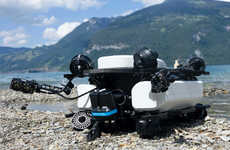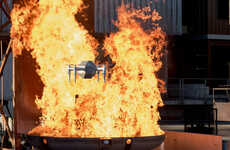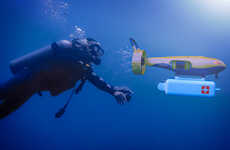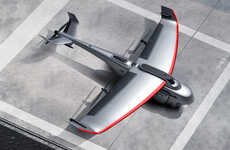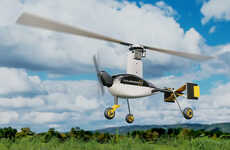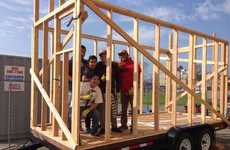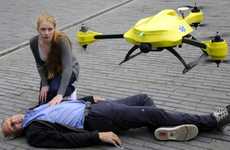
UAViators is Using Unmanned Aerial Vehicles to Deliver Humanitarian Aid
Alyson Wyers — February 19, 2015 — Tech
References: uaviators.org & springwise
In an effort to bridge the gap between the high costs and positive effect unmanned aerial vehicles (UAVs) and other new technologies (like 3D printers), UAViators is allowing drone operators to get involved with humanitarian work. Using the community surrounding unmanned aerial vehicles or drones, the Qatar Computing Research Institute subsidiary is trying to use the robots to provide disaster relief.
The humanitarian drones would be able to take high resolution aerial images faster and cheaper than satellites, which makes them ideal for communication in environmental disasters. Dubbed 'disaster drones,' the UAVs also enable an extremely rapid response and can share data in real time. They can even act as makeshift cellular towers so people can get access to information in dangerous times.
The humanitarian drones would be able to take high resolution aerial images faster and cheaper than satellites, which makes them ideal for communication in environmental disasters. Dubbed 'disaster drones,' the UAVs also enable an extremely rapid response and can share data in real time. They can even act as makeshift cellular towers so people can get access to information in dangerous times.
Trend Themes
1. Disaster Drones - Usage of unmanned aerial vehicles or drones for disaster relief purposes raise an opportunity for cost-effective and time-efficient response.
2. Real-time Data Sharing - Disaster drones allow for the sharing of high resolution aerial data in real-time, enhancing the ability to respond to potential threats and risks.
3. Drone Community Involvement - Uaviators' efforts to bridge UAVs or drones with humanitarian work highlights the opportunity for community involvement in disaster relief efforts.
Industry Implications
1. Emergency Response - The use of disaster drones creates opportunities for the emergency response industry to invest in more advanced technologies to mitigate risks and increase response times.
2. Telecommunications - Disaster drones could provide disruption in the telecommunications industry by acting as a communication tower and providing access to information in dangerous times.
3. Agriculture - The increased usage of drones and UAVs in disaster relief efforts can drive innovation in the agriculture industry with improved imaging and data collection capabilities.
5.2
Score
Popularity
Activity
Freshness


